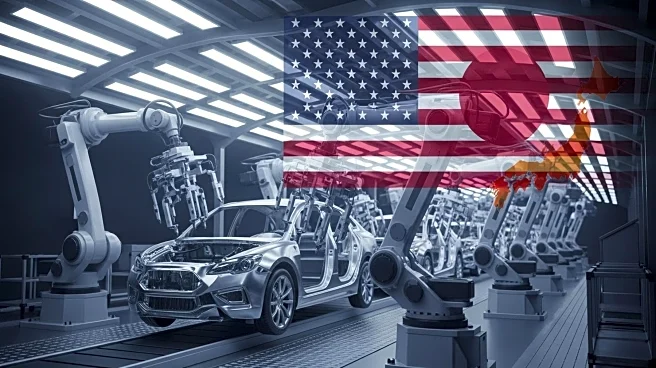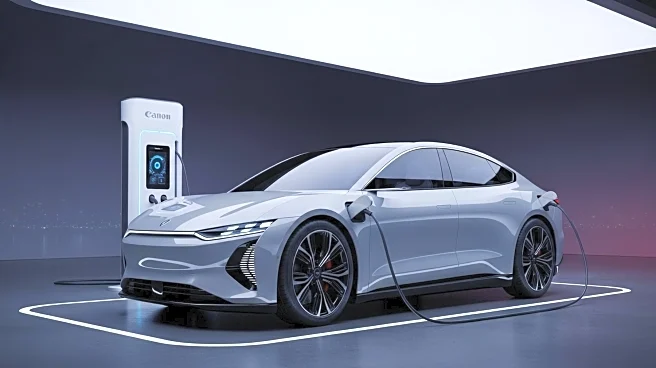What's Happening?
The U.S.-Japan trade deal finalized in July 2025 has significantly altered global trade dynamics, particularly benefiting Japanese export-linked sectors. The agreement includes a reduction of U.S. import tariffs on Japanese automotive exports from 25% to 15%, providing a competitive advantage to Japanese manufacturers. This tariff relief is expected to ease margin pressures for companies like Toyota, Honda, and Nissan, which collectively account for over 40% of U.S. light vehicle imports. Additionally, Japan has pledged a $550 billion investment into U.S. infrastructure and industrial sectors, further enhancing the economic relationship between the two countries.
Why It's Important?
The trade deal is crucial as it not only benefits Japanese automakers but also impacts U.S. industries. The reduced tariffs are likely to improve operating profits for Japanese companies, potentially leading to increased production and sales in the U.S. market. The $550 billion investment from Japan into U.S. sectors such as semiconductors and energy infrastructure could stimulate growth and innovation, benefiting both countries economically. However, the deal also poses challenges for U.S. automakers like General Motors and Ford, which face disadvantages due to remaining tariffs on Japanese steel and aluminum imports.
What's Next?
Investors are advised to strategically position their portfolios to capitalize on the benefits of the trade deal. Japanese automakers are expected to see increased profits, prompting equity analysts to recommend overweight allocations in companies like Toyota, Honda, and Subaru. On the U.S. side, agribusinesses with direct ties to Japan, such as Riceland Foods, are poised to benefit from expanded market access. Energy transition plays, particularly in bioethanol and sustainable aviation fuel, also warrant attention as Japan's purchases align with global decarbonization trends.
Beyond the Headlines
The trade deal represents a recalibration of economic interdependence between the U.S. and Japan. It highlights the strategic importance of cross-border investments and tariff adjustments in shaping global trade relations. The deal's focus on infrastructure and energy sectors underscores the long-term potential for collaboration in addressing global challenges such as climate change and technological advancement.













